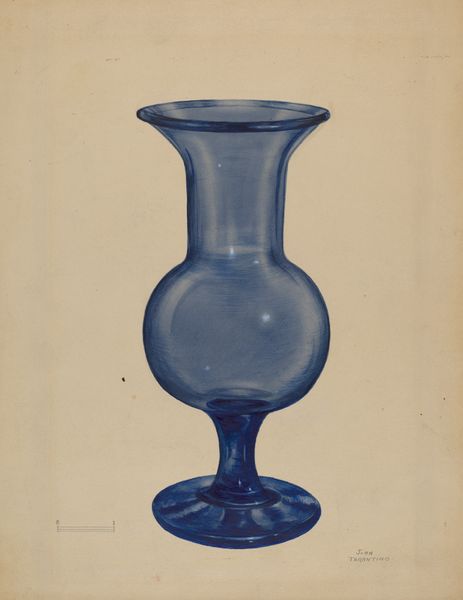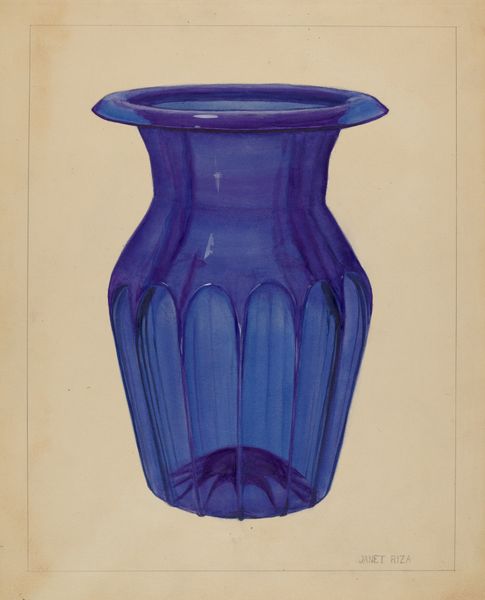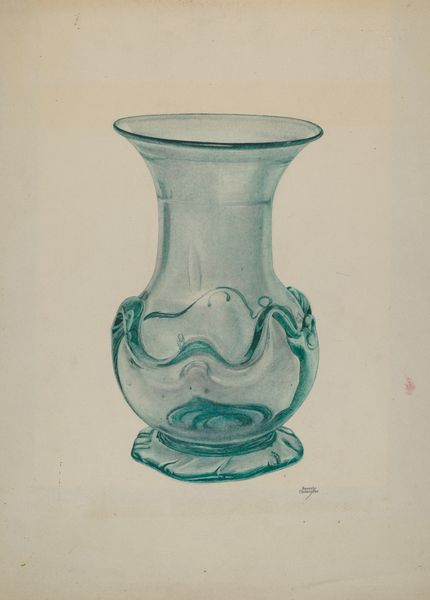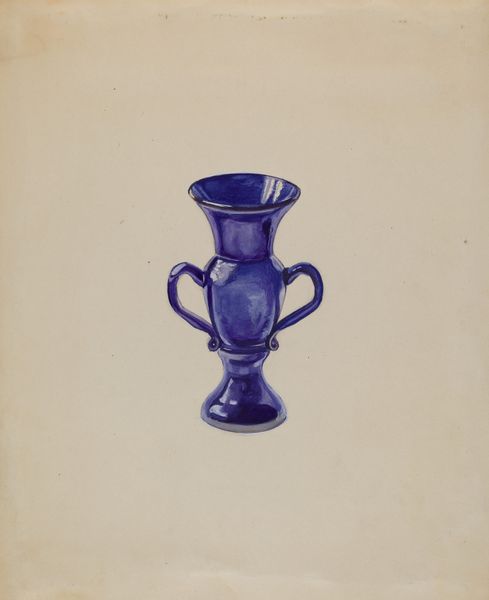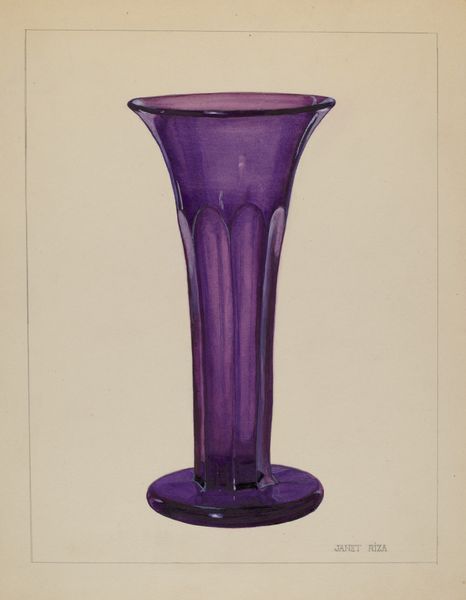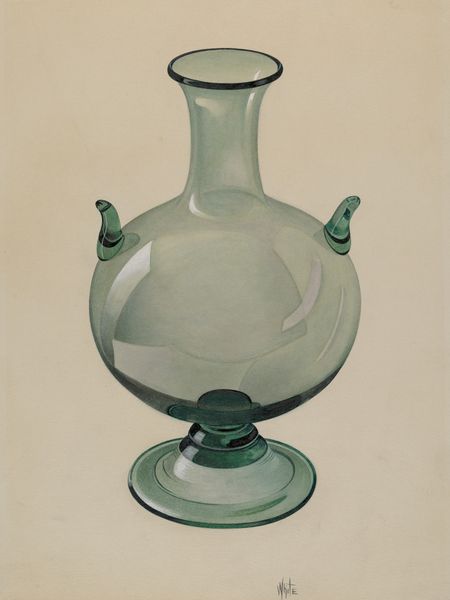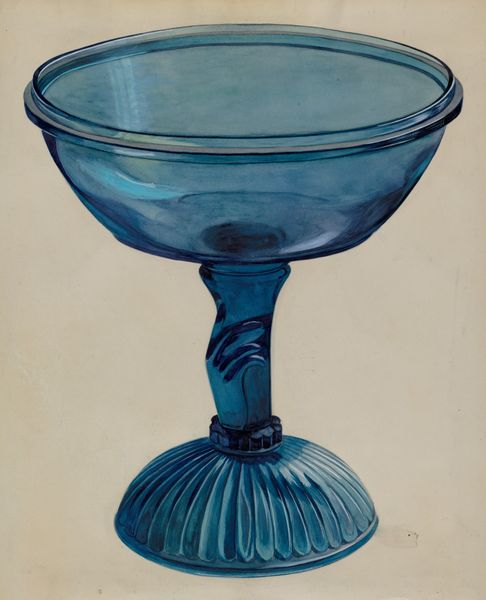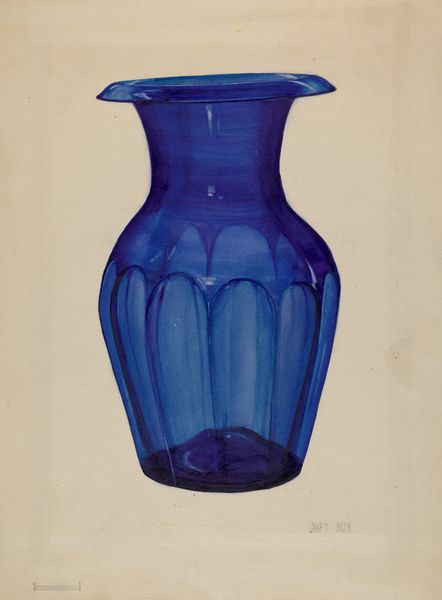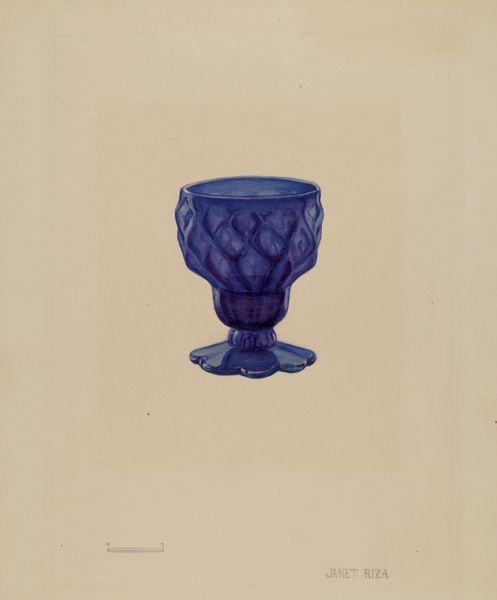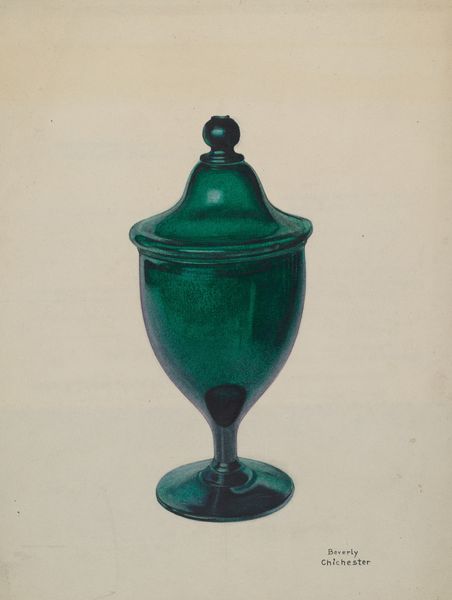
drawing, glass, watercolor, pendant
#
drawing
#
glass
#
watercolor
#
watercolour illustration
#
watercolor
#
realism
#
pendant
Dimensions: overall: 29.8 x 23.1 cm (11 3/4 x 9 1/8 in.)
Copyright: National Gallery of Art: CC0 1.0
Editor: So, this is an anonymous watercolour titled "Vase", likely painted sometime between 1935 and 1942. It’s a very straightforward depiction, but the translucent quality of the glass is well captured. What's your take on it? Curator: For me, the fascination lies in unpacking the labor and materiality involved in creating both the glass vase itself, and this depiction of it. The watercolour, while seemingly simple, invites questions about artistic process versus industrial production. Consider the glass: what resources were extracted, and how were they transformed to create this object of domestic use or aesthetic appreciation? Editor: That's interesting. I hadn’t considered it in terms of production, just as an isolated image. How does the watercolor medium itself play into that? Curator: Well, watercolour is interesting here. It's traditionally viewed as "lesser" than oil paint, considered a more ‘feminine’ medium suitable for decorative work. This then, allows us to question why a painter might choose this technique to immortalise something essentially commercial – glass. It collapses the hierarchy between ‘fine art’ and craft, making us question what society values. Editor: So you're saying that the choice of watercolor brings attention to the act of creation and consumption, rather than just the object's appearance? Curator: Precisely! And even how our perceptions have shifted in more modern times of cheap readily available goods and the labor involved to extract and produce such material in mass, or if this vessel had more symbolic importance for the individual that has now been removed by time. What does that suggest about the societal value assigned to these objects, and to the labor involved in making them accessible? Editor: I see. I was initially drawn to its simple beauty, but now I'm thinking about the whole system behind its creation. It really highlights the layers of value we place, or don't place, on everyday objects. Thanks! Curator: My pleasure. Hopefully, it leaves the visitor questioning their own relationship with consumption and artistry.
Comments
No comments
Be the first to comment and join the conversation on the ultimate creative platform.
